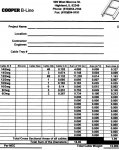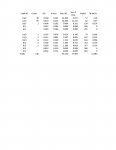-=PEAKABOO=-
Senior Member
- Location
- Fort Worth, Texas
I have a large resi job that I would like to use cable tray to cross and area of the basement to land all of the romex at the panels.
The panels are surface mounted on a concrete wall. My plan was to fabricate metal covers the same size as the panel 3.5" deep, 14" wide, 26" tall, basically a 3 sided box to hide or protect the romex. I am not sure if this will require derating the wire because it may be considered a raceway.
The other question I have.
I have read until I am blue in the face and I am still not sure I know the proper answer.
It is involving fill, derating etc of NM in a cable tray.
I believe I have calculated the fill correctly but wanted some second opinions before I make the move.
The whole time I was looking at doing this I kept seeing that thread of the cable tray full of romex that was posted here a while back.
Where it gets confusing is 392.9.
Not sure what size cable tray I would need and how much if any derating would be involved.

Thanks
The panels are surface mounted on a concrete wall. My plan was to fabricate metal covers the same size as the panel 3.5" deep, 14" wide, 26" tall, basically a 3 sided box to hide or protect the romex. I am not sure if this will require derating the wire because it may be considered a raceway.
The other question I have.
I have read until I am blue in the face and I am still not sure I know the proper answer.
It is involving fill, derating etc of NM in a cable tray.
I believe I have calculated the fill correctly but wanted some second opinions before I make the move.
The whole time I was looking at doing this I kept seeing that thread of the cable tray full of romex that was posted here a while back.
Where it gets confusing is 392.9.
Not sure what size cable tray I would need and how much if any derating would be involved.

Thanks


